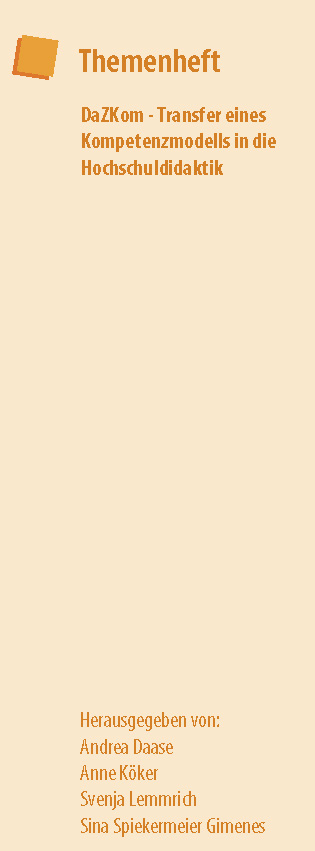Designing Subject-specific Lessons in a Linguistically Responsive Way with the Help of Scaffolding
Exemplary Presentation of an Opportunity to Learn
DOI:
https://doi.org/10.11576/hlz-5385Keywords:
scaffolding, opportunities to learn (OTL), German as a second language (GSL), linguistically responsive teaching (LRT), teacher educationAbstract
The opportunity to learn on the topic of scaffolding describes a session of the seminar “Linguistic Heterogeneity in School: Linguistically Responsive
Content Teaching” in a module on “Heterogeneity and Individualization” in the Bachelor’s program “B.A. Teaching and Learning” at Leuphana University Lüneburg. The learning object of the seminar session is the video vignette “Eine Pfütze am Himmel heißt nicht Pfütze” (Quehl & Trapp, 2020). The central scene shows third grade students who have conducted an experiment on the topic “water cycle” and are now supposed to share their observations in a “researchers’ conference”. The opportunity to learn is primarily assigned to the dimension of “didactics” and the facets of “macro”- and “micro-scaffolding” of the “DaZKom” model (Ohm, 2018). It offers a first insight into the concept of scaffolding and is suitable for students who have no to little prior knowledge; also, it can be deepened in terms of content as well as extended to other facets of the model if needed.
Downloads
Published
How to Cite
Issue
Section
License
Copyright (c) 2024 Svenja Lemmrich, Timo Ehmke

This work is licensed under a Creative Commons Attribution-ShareAlike 4.0 International License.
Sämtliche Inhalte der HLZ werden freigegeben unter der Creative-Commons-Lizenz Namensnennung, Weitergabe unter gleichen Bedingungen, Version 4.0 International (CC BY-SA 4.0). Die Urheber_innen und die Rechteinhaber_innen der in der HLZ veröffentlichten Beiträge gewähren grundsätzlich allen Nutzer_innen unwiderruflich das freie, weltweite Zugangsrecht zu diesen Veröffentlichungen. Unter der Bedingung, dass Autor_innen und Herausgeber_innen gemäß der Zitationshinweise sowie die Lizenz als »Lizenz: CC BY-SA 4.0« einschließlich der untenstehenden Lizenz-URL genannt werden, dürfen die Beiträge der HLZ vervielfältigt, weitergereicht und auf beliebige Weise genutzt werden, auch kommerziell und ebenso online wie in gedruckter oder anderer Form. Auch die Bearbeitung ist erlaubt unter der zusätzlichen Bedingung, dass das neu entstandene Werk als Bearbeitung gekennzeichnet wird und im Falle einer Veröffentlichung unter derselben Lizenz wie in der HLZ freigegeben wird.





